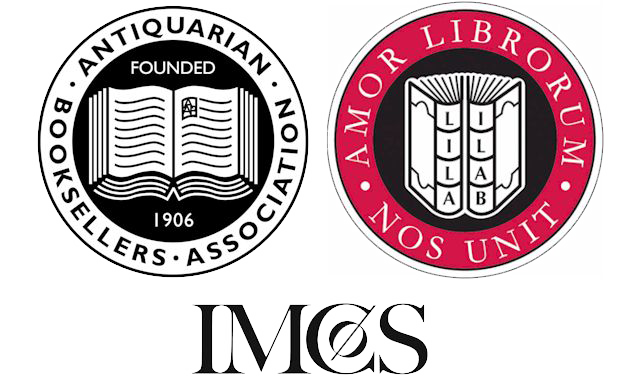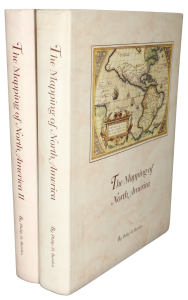Rare Maps and Prints
- World & Celestial
- North America
- West Indies, South & Central America
- British Isles
- British Isles
- English counties
- Large-scale
- Bedfordshire
- Berkshire
- Buckinghamshire
- Cambridgeshire
- Cheshire
- Cornwall
- Cumberland
- Derbyshire
- Devon
- Dorset
- Durham
- Essex
- Gloucestershire
- Hampshire
- Herefordshire
- Hertfordshire
- Huntingdonshire
- Islands
- Kent
- Lancashire
- Leicestershire
- Lincolnshire
- Middlesex
- Norfolk
- Northamptonshire
- Northumberland
- Nottinghamshire
- Oxfordshire
- Rutland
- Shropshire
- Somerset
- Staffordshire
- Suffolk
- Surrey
- Sussex
- Warwickshire
- Westmoreland
- Wiltshire
- Worcestershire
- Yorkshire
- Wales
- Scotland
- Ireland
- Western Europe
- Eastern Europe
- Middle East
- Africa
- Asia
- Australasia & Pacific
- Decorative Prints
- Title Pages
Mr. Philip D. Burden
P.O. Box 863,
Chalfont St. Giles, Bucks HP6 9HD,
UNITED KINGDOM
Tel: +44 (0) 1494 76 33 13
Email: enquiries@caburden.com
So many superlatives have been written on Darwin’s account including Hill who said that it was ‘one of the most interesting records of natural history exploration ever written and one of the most important, for it was on this voyage that Darwin prepared for his lifework, ultimately leading to ‘The Origin of Species” (Hill).
The five-year voyage was commanded by Robert FitzRoy (1805‐1865), a descendant of Charles II. Fitzroy had already been on a survey mission on the ‘Beagle’ to South America from 1826-30 which included the hydrographer Phillip Parker King (1793‐1856) on the ‘Adventure’. He was given command of the ship following the suicide of Captain Pringle Stokes. Re-appointed command of her in 1831, he was instructed to continue charting South America and take accurate chronometer readings around the globe. For this he took twenty-two chronometers on board. The ‘Beagle’ left Plymouth in December 1831 with a complement of 75 people and returned to Falmouth in October 1836.
The first volume here deals with the surveying work undertaken by King on the voyage from 1826-30 from the Rio de la Plata round Tierra del Fuego to Chiloe. The second volume recounts FitzRoy’s continued survey from 1831-36 in South America in the ‘Beagle’. It also surveyed the Galapagos islands, Tahiti, New Zealand and Australia amongst other locations. The return journey around the Cape of Good Hope called at St. Helena, Ascension Island, Bahia, Cape Verde Islands and the Azores. ‘The surveys he carried out in South American waters established FitzRoy as a first-rate hydrographer and won for him the gold medal of the Royal Geographical Society (1837). Because his marine surveys were accurate to such a high degree they are still used as the foundation for a number of charts of that area’ (DSB).
It is down to FitzRoy that Darwin accompanied the voyage. The second volume recounts ‘Anxious that no opportunity of collecting useful information, during the voyage, should be lost; I proposed to the Hydrographer [Francis Beaufort] that some well-educated and scientific person should be sought for who would willingly share such accommodations as I had to offer, in order to profit by the opportunity of visiting distant countries yet little known. Captain Beaufort [Hydrographer to the British Admiralty] approved of the suggestion, and wrote to Professor Peacock, of Cambridge, who consulted with a friend, Professor Henslow, and he named Mr. Charles Darwin [1809‐1882], grandson of Dr. Darwin the poet, as a young man of promising ability, extremely fond of geology, and indeed all branches of natural history. In consequence an offer was made to Mr. Darwin to be my guest on board, which he accepted conditionally; permission was obtained for his embarkation, and an order given by the Admiralty that he should be borne on the ship’s books for provisions. The conditions asked by Mr. Darwin were, that he should be at liberty to leave the ‘Beagle’ and retire from the Expedition when he thought proper, and that he should pay a fair share of the expenses of my table’ (Volume II, pp. 18-19). Apart from being a naval officer, FitzRoy was a scientist and along with being an excellent hydrographer he was a meteorologist. This passion for science enabled Darwin to flourish unimpeded on the voyage. Darwin was able go ashore to study flora, fauna, and geology.
On their return King returned to his roots in New South Wales. It was left to FitzRoy to write up the work from both voyages. It became clear that there was too much material for one volume, and it was decided that FitzRoy would compile the first two volumes on the two voyages. So as not to disrupt the flow of the narrative most of the technical material was left to an Appendix volume. Darwin was to supply a third volume on his discoveries. The resulting ‘Journal of Researches into the Geology and Natural History’ is his first published work.
It is “is undoubtedly the most often read and stands second only to On the Origin of Species as the most often printed” (Freeman, 31). It is “one of the most interesting records of natural history exploration ever written and is one of the most important, for it was on this voyage that Darwin prepared for his lifework, ultimately leading to The Origin of Species” (Hill I: 104-105).
“The five years of the voyage were the most important event in Darwin’s intellectual life and in the history of biological science. Darwin sailed with no formal scientific training. He returned a hard-headed man of science, knowing the importance of evidence, almost convinced that species had not always been as they were since the creation but had undergone change … The experiences of his five years in the Beagle, how he dealt with them, and what they led to, built up into a process of epoch-making importance in the history of thought” (DSB). Darwin himself wrote of it in his autobiography ‘The success of this my first literary child tickles my vanity more than that of any of my other books.’
Fitzroy himself was appointed Governorship of New Zealand in 1843 but returned to England in 1845. His interest in meteorology and its potential to save lives, particularly at sea, led him to develop fundamental methods of weather prediction. He developed an early weather station with a barometer and thermometer, developed a network of stations which fed data by telegraph and went on to publish in ‘The Times’ in 1861 the first weather forecasts.
Provenance: Libreria de Antanao 2001; Juan and Peggy Rada Collection. Borba de Moraes (1958) p. 208; Carter (1967) ‘Printing and the Mind of Man’, 344; Darwin (1887); Dictionary of Scientific Biography; Ferguson (1976) III.2708; Freeman (1965) 10, 11 & 31; Hill (1974) pp. 104-5; Howgego (2004) II.F10; Martinic (1999) p. 206, no. 164; ODNB; Sabin (1868-1936) 37826.








